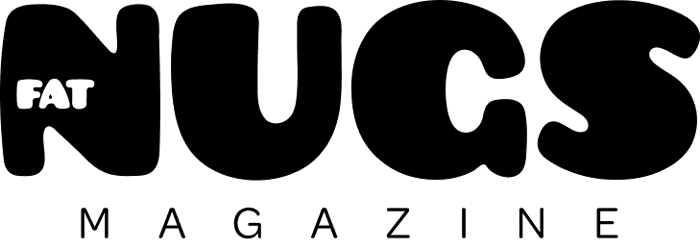There’s something about cannabis conferences that feels a little like heading back home for a long-overdue family reunion. The weird uncle is still weird. The cousin you used to beef with shows up, and suddenly you’re talking like old friends. You run into the siblings you haven’t seen in years and somehow pick up right where you left off. And then there are the new faces; people you’ve texted, Zoomed with, maybe even shouted them out through your social media, or even featured them in your magazine, but never actually met in person, until now.
Benzinga: Where Capital Meets Culture
On June 9th in the heart of Chicago, thanks to Joel Pearson of Canopy HR, I walked into my very first Benzinga Cannabis Capital Conference, not knowing what to expect. I’d heard the stories: high-dollar panels, a crowd heavy on suits and startup pitches, an atmosphere where investors and operators dance the delicate tango of hope and capital. But I wanted to see it for myself. I wanted to step into the room and see where the real energy was.
I found it with the culture side of the industry that had a much heavier presence than I was expecting. Almost immediately, Nick Sclafani and I started bumping into familiar names like Dee Sidhu, Scott Vasterling, Rob Sanchez, Jamie Pearson, Byron Stanton, Bill and Jeff Levers, Sandra Bergman, Angela Phi, Greg Welch, Fernando Bent-Mullings, Brendan McKee, Seth Yakatan, and Jeremy Ortiz, just to name a few. Each one is a powerhouse in their own right, and in full live-3D after years of sometimes digital-only connections.
These weren’t just run-ins. They were overdue collisions. Industry friendships created online, nurtured through mutual respect, and finally grounded in real-world energy. And that’s one of the most beautiful parts of this weird world we call the cannabis industry. When we show up, we really show up. And when we find ourselves under one roof, it becomes something more than just a conference. It becomes community. A moment. A reminder that we’re not doing this work in isolation and that there are hundreds, if not thousands, of us operating under immense amounts of pressure, with little to no financial backing, stressed to the gills, yet loving the opportunity to be in a space with others who are just as passionate as us.
Buzz, Brainstorms, and the Beautiful Mess of It All
I’ve been to my fair share of cannabis events. Some are gritty. Some are glossy. Some leave you questioning the entire point of it all. But Benzinga hit different. It was clean-cut but relatively electric, polished but packed with a lot of us that are driven by our love and passion, complete with hugs, surprises, spoken and unspoken drama, and all the in-between.
The entire hotel was buzzing with cannabis professionals. People from all walks of life and all corners of our industry were in that building. Benzinga had an actual pulse instead of being some gigantic cold collection of booths on concrete floors. Conversations didn’t feel forced; they felt fueled. And although I wasn’t able to get to a single panel (not by choice), I was told they were interesting to say the least, especially the ones where MSO “leadership” looked like a deer in headlights with no support from the crowd – really wish I could have been there for that.
Hallways doubled as deal rooms. Bagel breakfasts and deep-dish pizza dinners turned into brainstorming sessions. But I’m not going to sit here and pretend it was all perfect. Because, like any family reunion, there were moments that made me roll my eyes. There were conversations I dodged, energy I didn’t vibe with, and the unavoidable realization that while our industry feels tight-knit, it’s also fragmented in complicated ways. And hey, that’s okay because cannabis is now a part of the capitalist landscape whether we like it or not, so everyone’s got their schtick and angle…it’s worth calling out.
This Wasn’t Just a Conference, It Was a Checkpoint
Let me say this clearly: for Fat Nugs Magazine – Benzinga was productive as hell. We didn’t just attend. We activated. We connected with folks, fielded ideas that have real weight, and made introductions that didn’t just fill a contact list; they sparked genuine possibility. We met with brands that already follow our work and value what FNM represents in this space. We found alignment in places we didn’t expect. We got seen. And more importantly, we saw others.
That alone makes Benzinga stand out. Because let’s be honest, there are cannabis conferences out there that feel like ghost towns in disguise. Big names, no soul. Big stages, no substance. But Benzinga had life to it. It was sharp, yes. Corporate at times? Sure. But beneath that was a vibe that says: “Cannabis is moving forward with or without you.”
It reminded me that while the industry is maturing, evolving, and chasing capital, the culture not only breathes inside these spaces, it dominates them, if you’re really paying attention. And if you’re like me, someone who came into cannabis not for the clout but for the cause, you need those reminders every now and then. You need to see our community and culture walking around, talking shop, laughing, building, bonding. Otherwise, what the hell are we even doing?
So, if you’ve never been to Benzinga and you’re wondering if it’s worth your time, you came to the right spot. Below, you’ll find the good, the bad, and the ugly to tell you exactly why you might want to put this one on your must-attend list, or why you might want to skip it altogether. Spoiler alert: it depends on what you’re showing up for.
But for now, just know this: my first Benzinga wasn’t just a conference. It was a checkpoint for me, for Fat Nugs Magazine, and for the industry at large. And what I saw between the deals and the handshakes, the panels and the late-night smoke seshes, was a snapshot of an industry still trying to figure itself out. Beautifully. Imperfectly. And loud.
And that? That’s worth showing up for.
The Good: Energy, Culture, and a Damn Good Location
- Location. Location. Vibe. Chicago might just be one of the best cities in the country to host a cannabis conference. The food, the art, the culture, the community all hits different here. And the Marriott Downtown on Miracle Mile? Hands down one of the best conference setups I’ve ever experienced. You wake up, take the elevator down, and boom, you’re in the middle of the action. That level of convenience was a quiet powerhouse throughout the event, and honestly, it’s one of the key ways Benzinga set itself apart from the pack.
- This time, the culture showed up, and it mattered. Benzinga has long carried a reputation for being a polished, buttoned-up playground for MSOs and high-level suits, where culture and community usually get benched. But not this time. Everywhere you turned, you saw people who live this plant, people who care, who advocate, who built their lives around cannabis long before the suits showed up. You’ve got to give credit where it’s due, Elliot Lane and the Benzinga crew made space for the soul of the industry to breathe. The result? A powerful, sometimes jarring mix of operators who clock in for cannabis…and lifers who never clock out. That tension is real, and it’s exactly the kind of dichotomy this industry needs to be aware of.
- The conference was undeniably productive. The expo floor wasn’t just for show; it was alive with real energy. You could talk to operators who are actually in the trenches, trade strategies that haven’t been watered down, ink deals on the fly, and walk away with connections that mean something. It hit that rare sweet spot: big enough to matter, but gritty and grounded enough to keep it real. What I saw was people building, hustling, and getting shit done.
- MADE Gallery: This place was special. From the moment I walked in, I was transported to what I always wished a smoke shop and gallery could be. But MADE Gallery isn’t just a gallery or a smoke shop; it’s a hyper-local speakeasy in Chicago, a hidden sanctuary where the city’s soul meets cannabis culture. Behind its doors, you’ll find mixology from Carlos Ramos with a THC twist, walls dripping in raw local art, hand-blown glass that hits as hard as it looks, and a stash of craft nugs and concentrates from Toastie – the cannabis keeper, that’d make any head swoon. It’s the kind of spot that doesn’t just welcome you in, it dares you to stay, light up, and lose track of time. I highly recommend stopping in and supporting Chris, the owner, the next time you’re in Chicago.
The Bad: Travel, Costs, and VIP-Only Barriers
- Traveling to the city of Chicago can be an enormous pain the ass. O’Hare International Airport is not only very busy, but also a very hectic place that’s not easy to navigate. Then, once you finally catch a taxi or Uber, which can take up to an hour or more, the 20-mile ride to the hotel can take multiple hours as well. Be prepared for a long day of travel no matter where you’re flying in from.
- Conferences are expensive. Benzinga is no exception. So for the small operators, this conference might be out of reach.
- There’s still something surreal, maybe even a little off, about walking into a space where cannabis business is buttoned up in blazers and stiff collars. For a moment, it felt like any other corporate conference I hit in my 20s or 30s, where the bar was packed while the smoke circle outside barely held a spark. I wasn’t shocked, just…observing. And it made me wonder: is alcohol still more acceptable than weed, even at a cannabis conference? Especially among folks who treat the plant like just another line on a balance sheet instead of something sacred? Is this even worth mentioning, or am I just having a “get off my lawn” moment? Maybe I’m just a grizzled 50-year-old burnout clinging to the dream that this industry might actually embrace the plant that built it. Who knows, I probably just think too much.
- I wasn’t able to get into the panels I wanted to see. For some odd reason, some of the panels were held behind a VIP section that I was denied access to. This is not an ideal situation, especially for media coverage.
The Ugly: When the Industry Forgets Its Roots
- When I talked to Greg Welch, he told me donations for art that go directly to Freedom Grow were the lowest of any conference this year. Sad? Yeah. Frustrating? Absolutely. Surprising? Not really. This is still an industry filled with people who never gave a damn about cannabis until it came wrapped in a business plan and stock options. Most of them never got raided, never had a cousin do time over a dime bag, never had to hide out back with a hole-filled Coke can just to take the edge off. They’ve never sat across from a farmer who treats this plant like medicine. But here’s the part that really burns; the very reason these folks get to walk into a conference, shake hands, and talk shop in blazers and badges, is because people sacrificed. People went to prison. People are still in prison. Those same people built the path these folks are now sprinting down. And the least this new wave could do is show some respect.
Benzinga opened the door to culture this year, and that matters. If they keep it open, maybe next time the donations grow, the awareness spreads, and these companies realize supporting the people who paid the price isn’t charity, it’s paying dues. Because in cannabis, the deeper your roots in the culture, the stronger you stand. Everything else? It’s just a cash grab with no soul.
At the end of my three days in Chicago, I walked away from Benzinga with something I didn’t fully expect – HOPE. Not the naïve kind, but the kind that comes from watching two worlds slowly inch closer: the capital-driven machine and the culture that kept this plant alive in the dark. I’m grateful to the people who made space for voices like ours, for connections that weren’t surface-level, and for the chance to be reminded that there’s still real power in showing up. If Benzinga continues to evolve like this, welcoming both the boardroom and the backroom, then maybe, just maybe, we’re moving in the right direction. And that’s something worth building on.





